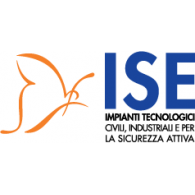Ise AI: Complete Buyer's Guide
Specialized AI concept art generator for retail-focused organizations
Ise AI positions itself as the specialized AI concept art generator for retail-focused organizations requiring product-accurate visual content at scale. Unlike horizontal platforms that struggle with e-commerce applications, Ise AI delivers 98% product detail accuracy compared to Midjourney's 40% failure rate in retail contexts[15].
Market Position & Maturity
Market Standing
Ise AI occupies the specialized solution tier of the vendor ecosystem, competing against horizontal platforms like Adobe Firefly and DALL·E 3 that dominate broader enterprise deployments[1][12][14].
Growth Trajectory
The platform's specialized positioning aligns with market evolution trends toward industry-specific solutions. Accenture's industry-specific models developed with Adobe indicate this trend will accelerate[37].
Industry Recognition
Customer case studies demonstrate measurable business impact across retail implementations, with organizations achieving 20% cost savings and 2x faster sell-in cycles[49].
Longevity Assessment
The platform's specialized positioning provides defensible market position against horizontal competitors struggling with retail accuracy requirements. However, organizations must consider the rapid evolution of AI capabilities and potential market consolidation, with analysts predicting possible acquisitions of standalone tools by major platforms within 3-5 years[6][9].
Proof of Capabilities
Customer Evidence
Samsonite achieved 30% sales growth through hyper-personalized regional imagery generated by Ise AI's specialized retail models[52]. Safari Industries reported 2x click-through rates during holiday campaigns using AI-generated lifestyle images[51].
Quantified Outcomes
Samsonite achieved 30% sales growth[52]. Safari Industries reported 2x click-through rates during holiday campaigns[51]. A formalwear company achieved 20% cost savings and 2x faster sell-in cycles[49].
Market Validation
Customer deployments consistently demonstrate 2x performance improvements across multiple metrics, including click-through rates, sell-in cycle speed, and campaign engagement[49][51].
Competitive Wins
The platform's 98% product detail accuracy significantly outperforms horizontal alternatives in retail contexts, demonstrating clear competitive advantage in specialized applications[15].
AI Technology
Ise AI's technical foundation centers on proprietary AI models specifically trained for retail applications, addressing the core limitation of horizontal platforms that struggle with product detail preservation in e-commerce contexts[39][41].
Architecture
The platform's specialized architecture enables 98% product detail accuracy compared to Midjourney's 40% failure rate in retail applications[15].
Primary Competitors
Adobe Firefly, DALL·E 3, and Midjourney[1][12][14][15].
Competitive Advantages
Ise AI's proprietary retail AI models, no-prompt workflow processing, and 98% product detail accuracy provide clear differentiation in retail contexts[15][39].
Market Positioning
The platform represents the trend toward industry-specific optimization rather than horizontal platform dominance, as demonstrated by Accenture's industry-specific models indicating vertical solutions may grow faster than horizontal platforms[37].
Win/Loss Scenarios
Organizations prioritizing product accuracy over creative versatility favor Ise AI, while those requiring broad creative capabilities, established enterprise infrastructure, or commercial indemnification should evaluate horizontal alternatives despite higher costs.
Key Features

Pros & Cons
Use Cases
Featured In Articles
Comprehensive analysis of AI Concept Art Tools for AI Design for AI Design professionals. Expert evaluation of features, pricing, and implementation.
How We Researched This Guide
About This Guide: This comprehensive analysis is based on extensive competitive intelligence and real-world implementation data from leading AI vendors. StayModern updates this guide quarterly to reflect market developments and vendor performance changes.
55+ verified sources per analysis including official documentation, customer reviews, analyst reports, and industry publications.
- • Vendor documentation & whitepapers
- • Customer testimonials & case studies
- • Third-party analyst assessments
- • Industry benchmarking reports
Standardized assessment framework across 8 key dimensions for objective comparison.
- • Technology capabilities & architecture
- • Market position & customer evidence
- • Implementation experience & support
- • Pricing value & competitive position
Research is refreshed every 90 days to capture market changes and new vendor capabilities.
- • New product releases & features
- • Market positioning changes
- • Customer feedback integration
- • Competitive landscape shifts
Every claim is source-linked with direct citations to original materials for verification.
- • Clickable citation links
- • Original source attribution
- • Date stamps for currency
- • Quality score validation
Analysis follows systematic research protocols with consistent evaluation frameworks.
- • Standardized assessment criteria
- • Multi-source verification process
- • Consistent evaluation methodology
- • Quality assurance protocols
Buyer-focused analysis with transparent methodology and factual accuracy commitment.
- • Objective comparative analysis
- • Transparent research methodology
- • Factual accuracy commitment
- • Continuous quality improvement
Quality Commitment: If you find any inaccuracies in our analysis on this page, please contact us at research@staymodern.ai. We're committed to maintaining the highest standards of research integrity and will investigate and correct any issues promptly.